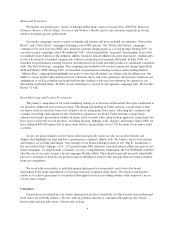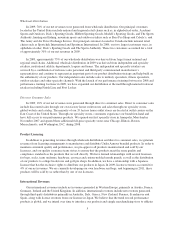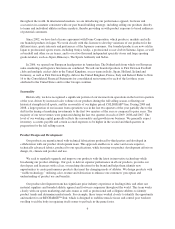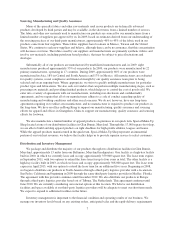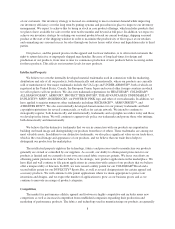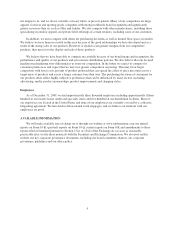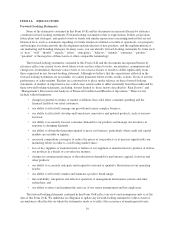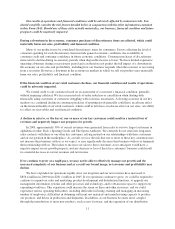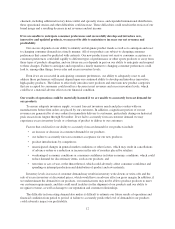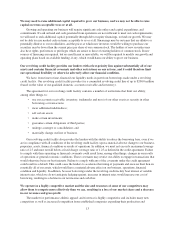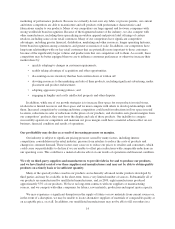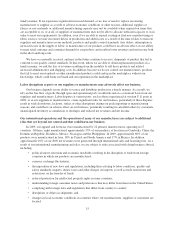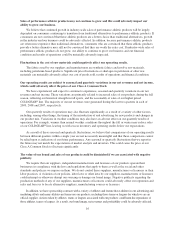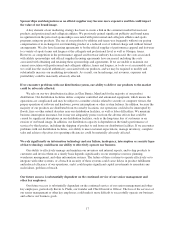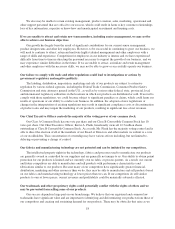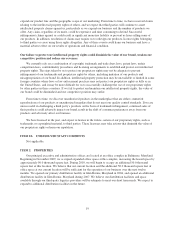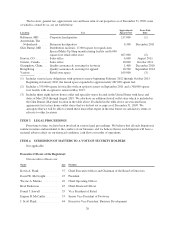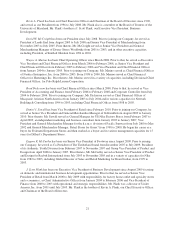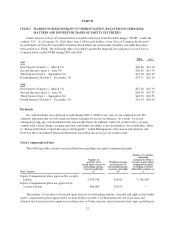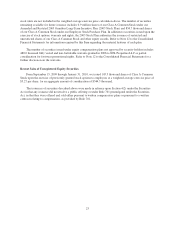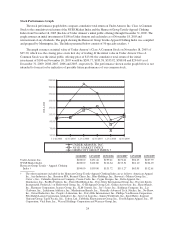Under Armour 2009 Annual Report Download - page 22
Download and view the complete annual report
Please find page 22 of the 2009 Under Armour annual report below. You can navigate through the pages in the report by either clicking on the pages listed below, or by using the keyword search tool below to find specific information within the annual report.marketing of performance products. Because we currently do not own any fabric or process patents, our current
and future competitors are able to manufacture and sell products with performance characteristics and
fabrications similar to our products. Many of our competitors are large apparel and footwear companies with
strong worldwide brand recognition. Because of the fragmented nature of the industry, we also compete with
other manufacturers, including those specializing in outdoor apparel and private label offerings of certain
retailers, including some of our retail customers. Many of our competitors have significant competitive
advantages, including greater financial, distribution, marketing and other resources, longer operating histories,
better brand recognition among consumers, and greater economies of scale. In addition, our competitors have
long-term relationships with our key retail customers that are potentially more important to those customers
because of the significantly larger volume and product mix that our competitors sell to them. As a result, these
competitors may be better equipped than we are to influence consumer preferences or otherwise increase their
market share by:
• quickly adapting to changes in customer requirements;
• readily taking advantage of acquisition and other opportunities;
• discounting excess inventory that has been written down or written off;
• devoting resources to the marketing and sale of their products, including significant advertising, media
placement and product endorsement;
• adopting aggressive pricing policies; and
• engaging in lengthy and costly intellectual property and other disputes.
In addition, while one of our growth strategies is to increase floor space for our products in retail stores,
retailers have limited resources and floor space and we must compete with others to develop relationships with
them. Increased competition by existing and future competitors could result in reductions in floor space in retail
locations, reductions in sales or reductions in the prices of our products, and if retailers earn greater margins from
our competitors’ products, they may favor the display and sale of those products. Our inability to compete
successfully against our competitors and maintain our gross margin could have a material adverse effect on our
business, financial condition and results of operations.
Our profitability may decline as a result of increasing pressure on margins.
Our industry is subject to significant pricing pressure caused by many factors, including intense
competition, consolidation in the retail industry, pressure from retailers to reduce the costs of products and
changes in consumer demand. These factors may cause us to reduce our prices to retailers and consumers, which
could cause our profitability to decline if we are unable to offset price reductions with comparable reductions in
our operating costs. This could have a material adverse effect on our results of operations and financial condition.
We rely on third-party suppliers and manufacturers to provide fabrics for and to produce our products,
and we have limited control over these suppliers and manufacturers and may not be able to obtain quality
products on a timely basis or in sufficient quantity.
Many of the specialty fabrics used in our products are technically advanced textile products developed by
third parties and may be available, in the short-term, from a very limited number of sources. Substantially all of
our products are manufactured by unaffiliated manufacturers, and, in 2009, eight manufacturers produced
approximately 55% of our products. We have no long-term contracts with our suppliers or manufacturing
sources, and we compete with other companies for fabrics, raw materials, production and import quota capacity.
We may experience a significant disruption in the supply of fabrics or raw materials from current sources or,
in the event of a disruption, we may be unable to locate alternative suppliers of materials of comparable quality at
an acceptable price, or at all. In addition, our unaffiliated manufacturers may not be able to fill our orders in a
14


